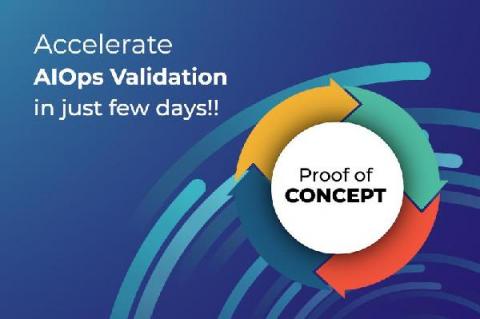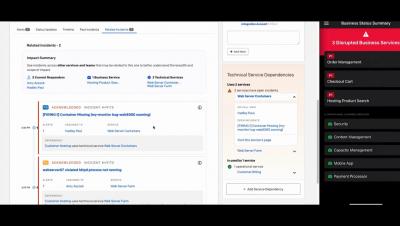Operations | Monitoring | ITSM | DevOps | Cloud
AIOps
The latest News and Information on AIOps, alerting in complex systems and related technologies.
ITOps In 2 Minutes | AIOps vs MLOps | Jay Menon
AIOps POC no longer have to be long and resource intensive
PagerDuty for AIOps Solution Demo
10 Ways to Get Ahead with OpsRamp's AIOps
IT operations departments in larger enterprises often use 10-15 monitoring tools across different teams to track the health and availability of their core business services. Rather than helping ITOps teams gain a comprehensive view of their infrastructure, an overload of monitoring tools tends to only compound organizational silos and limit insights for incident troubleshooting. Yes, there is too much of a good thing.
Observability & AIOps, the perfect combination for dynamic environments
Coffee Break Webinar Series: Intelligent Observability for DevOps
Amidst the nonstop pace of work to constantly evolve today’s digital business, we can forget to take a moment out to think about how it is that we’re doing that work. A new series of ‘coffee break’ webinars aim to provide that opportunity by pausing to look at the ways humans can best work with observability data. In particular, Coffee Break with Helen Beal looks at improving the work done by different types of software engineers that leverage artificial intelligence.
A Day in the Life: Intelligent Observability at Work with an ITOps Hero
This is the second in a series of blog posts exploring the role that intelligent observability plays in the day-to-day life of smart teams. In this post, meet our clever ITOps engineer, James, as he reduces noise and distraction using intelligent observability.
Seven KPIs for AIOps
Leaders looking to measure the benefits of AIOps and build key performance indicators (KPIs) for both IT and business audiences should focus on key factors such as uptime, incident response, remediation time and predictive maintenance, so that potential outages affecting employees and customers can be prevented. Business KPIs connected to AIOps include employee productivity, customer satisfaction and web site metrics such as conversion rate or lead generation.
Announcing Alert Grouping for the AIOps Early Warning System
Available for Enterprise and Enterprise MSP customers, the new Header Graph (Beta) feature is being rolled out in the v148 release. This time-series graph allows for easy alert grouping to cut down troubleshooting time and quickly identify the resources that are causing an alert storm.











